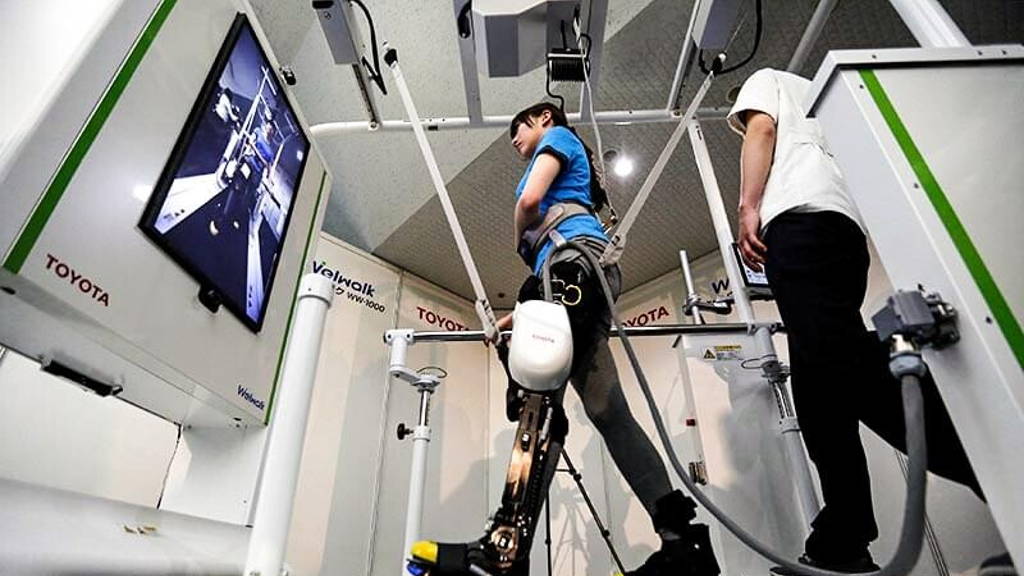Worldwide spending on robotics and related services will more than double by 2020, growing from $91.5 billion in 2016 to more than $188 billion in 2020, according to a recent report from market research firm IDC. Healthcare is among the leading and fastest growing segments in robotics, with 4.5 billion dollars in spending in 2016. A fast growing segment is that of social robots.
The Welwalk WW-1000 has a range of rehabilitation support functions based on motor learning theory, including the ability to adjust the difficulty level to suit the patient, and to provide feedback about the patient's gait characteristics. The robot's simple construction and functions, such as easy fitting and central touch panel operation, ensure the ease of use in clinical settings.
In line with this vision of‘ Partner Robot technology’, of "freedom of mobility for all, and the joy of self-reliance" as well as taking into consideration Japan's growing aging population, Toyota is now developing Partner Robot technologies that relates to the areas of:
• Senior Life Support,
• Medical Support,
• Personal Life Support,
• Welfare Support.
According to Toyota, feedback from patients and healthcare persons involved in the clinical research indicates that this robot has the potential to aid in lower limb recovery, and as a result, the use of the robot as a medical device has been officially approved and certified. Toyota hopes to rent 100 units of the Welwalk WW-1000 robots to medical facilities beginning in the fall of 2017.
A videos explaining the workings of the Welwalk : ###toyota-robotics-1###
Rental service
According to a press release, Toyota will launch a rental service for the Welwalk WW-1000 robot starting in the fall of 2017. The Welwalk WW-1000 has been designed to aid in the rehabilitation of individuals with lower limb paralysis as a result of stroke and other causes, Toyota states.The Welwalk WW-1000 has a range of rehabilitation support functions based on motor learning theory, including the ability to adjust the difficulty level to suit the patient, and to provide feedback about the patient's gait characteristics. The robot's simple construction and functions, such as easy fitting and central touch panel operation, ensure the ease of use in clinical settings.
Co-existing
Toyota began installing industrial robots in the 1980s, and since then has applied automobile production and developmental technologies to the advancements of Partner Robot technology, where the robots can be viewed as companions to provide support and to also co-exist with people.In line with this vision of‘ Partner Robot technology’, of "freedom of mobility for all, and the joy of self-reliance" as well as taking into consideration Japan's growing aging population, Toyota is now developing Partner Robot technologies that relates to the areas of:
• Senior Life Support,
• Medical Support,
• Personal Life Support,
• Welfare Support.
Rehabilitation robots
Development of rehabilitation robots in the field of Medical Support began at the end of 2007 with the collaboration with Fujita Health University Hospital in Toyoake, Aichi Prefecture. Since 2011, pilot testing has been conducted at the hospital's medical facilities. Between 2014 and the end of March 2017, Walk Training Assist robots have been installed in 23 medical facilities throughout Japan for clinical research.According to Toyota, feedback from patients and healthcare persons involved in the clinical research indicates that this robot has the potential to aid in lower limb recovery, and as a result, the use of the robot as a medical device has been officially approved and certified. Toyota hopes to rent 100 units of the Welwalk WW-1000 robots to medical facilities beginning in the fall of 2017.
A videos explaining the workings of the Welwalk : ###toyota-robotics-1###






